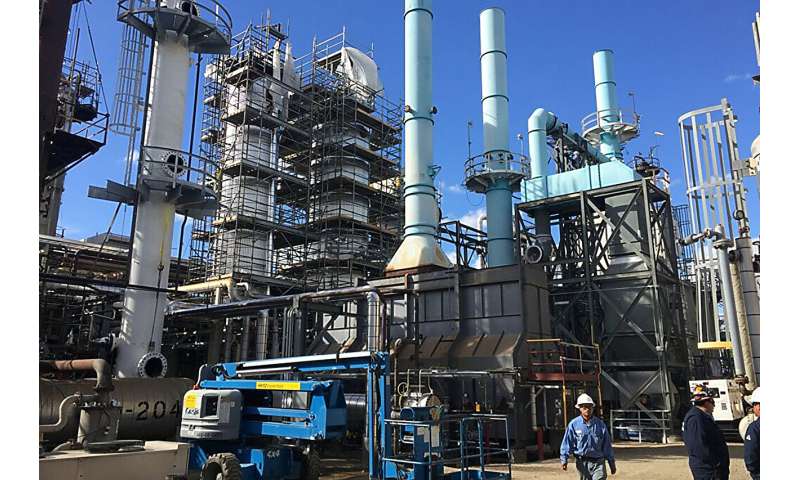Is green hydrogen the fuel of the future?

As the world seeks alternatives to fossil fuels, scientists are looking to hydrogen as a promising source of clean fuel. Unlike gasoline, which releases carbon dioxide when burned, hydrogen combustion produces only water vapor, making it a clean and environmentally friendly alternative. More often, hydrogen is converted to water and electricity in a fuel cell, as in the Toyota Mirai. It is already being used in this way to fuel zero-emission fuel cell electric vehicles (FCEVs) and has long been used by NASA to send rockets into space.
As the most abundant element on Earth, hydrogen has the potential to transform many of the sectors that power our world, from transportation and utilities to biofuels, fertilizers and environmentally benign chemicals. However, the high cost and logistical complexity of physically transporting hydrogen present cost barriers that we all have to pay for in the cost of our electricity, fuels and foods.
Travis Williams, a chemist at the USC Loker Hydrocarbon Research Institute, is tackling this challenge head-on by developing a "hydrogen on-demand" reactor that promises to simplify and cost-effectively revolutionize the transportation of hydrogen. In 2022, the U.S. Department of Energy recognized Williams' groundbreaking technology as one of five pivotal achievements in recent hydrogen research history.
"The current cost of hydrogen is mostly driven by the expense of compressing and delivering it. Our reactor essentially delivers high-pressure hydrogen when and where you need it, allowing users to convert it into energy or other products without producing any pollution," said Williams, who is also a professor of chemistry at the USC Dornsife College of Letters, Arts and Sciences. "Our goal is to make hydrogen more accessible and economical as a clean energy source, and this technology is a major step forward."
Harnessing the power of green hydrogen
Green hydrogen refers to hydrogen gas produced through a process that uses renewable energy sources, such as wind, solar or hydropower, to extract hydrogen from water or other sustainable feedstocks. This production method is considered "green" because it generates minimal or no greenhouse gas emissions, making it an eco-friendly alternative to conventional hydrogen production methods, which often rely on fossil fuels.
The cleanest process for producing green hydrogen is called electrolysis, in which an electric current is passed through water to split it into its constituent elements, hydrogen and oxygen. The electricity used in this process can come from renewable sources, ensuring that the overall carbon footprint of the hydrogen production is very low or even zero.
In addition to being 100% sustainable, green hydrogen is easy to store and incredibly versatile. It can effectively supplement intermittent energy sources such as solar and wind, addressing the gaps in their reliability. The U.S. Department of Energy expects that green hydrogen, generated from these sources, will eventually displace natural gas-based hydrogen, generated by methane steam reforming, ultimately to eliminate the carbon footprint of the hydrogen industry.
Hydrogen's uses are vast. In addition to applications in transportation, hydrogen is a key ingredient in a range of industrial processes including petroleum refining, metal treatment, fertilizer production and food processing.
However, due to hydrogen's high reactivity and flammability, regulatory authorities have established stringent pressure and purity standards. Meeting these standards can be particularly challenging, especially when producing hydrogen for use in vehicles.
"To meet specs for vehicle filling, you have to compress the gas to a certain pressure. The cost of running the compressor ends up being almost equal to the cost of the hydrogen itself for cars, which contributes to some of the affordability problems we're seeing in hydrogen production today," said Williams.
"Our reactor is designed to operate effectively at high pressure, and the chemical reaction generates sufficient energy for self-pressurization, eliminating the need for expensive compressors," he added.
The reactor also transports hydrogen in a more affordable liquid form known as formic acid, which can then be transported to the desired location and converted back into hydrogen. This transformative technology allows for the seamless mobility of hydrogen, ensuring it can be readily converted into a usable form wherever and whenever it is needed.
In California, hydrogen is taking off and USC tech can help bring it to market
While electric cars powered by lithium-ion batteries dominate the landscape of zero-emission vehicles, hydrogen FCEVs are on the road, too—especially in California. In recent years, the Golden State has doubled down on its investment in hydrogen infrastructure. California currently hosts 57 of the 58 hydrogen fueling stations nationwide, with the only exception in Hawaii.
"For a long time, there has been a debate about the ideal role of electric vehicles, particularly in urban areas like L.A. The aim has always been to reduce gas vehicle usage due to emissions, and hydrogen vehicles were seen as a solution if we could establish the necessary refueling infrastructure," Williams said.
"If you combine lithium-ion batteries with a liquid or gaseous hydrogen carrier, you can significantly enhance fuel range. Our reactor can help make that happen," Williams said, adding that the chemistry of these carriers can store much more energy compared to solid-state batteries.
While FCEVs are important, most hydrogen is used for liquid fuels and fine chemicals. California is also taking on sustainable aviation and, last year, marked a major milestone with the announcement of a $2 billion expansion project at the World Energy sustainable aviation fuel facility in Paramount, Calif. This adds to the facility's current capacity to refine renewable diesel fuel. The facility is the largest of its kind in North America and is poised to become a global hub for hydrogen-powered diesel and jet fuel production as well, so long as it can get enough hydrogen. Renewable fuels manufacturing is emerging as one of the largest uses for on-demand hydrogen generation. This is an opportunity where Williams sees important impact potential for emerging USC technology.
Provided by University of Southern California